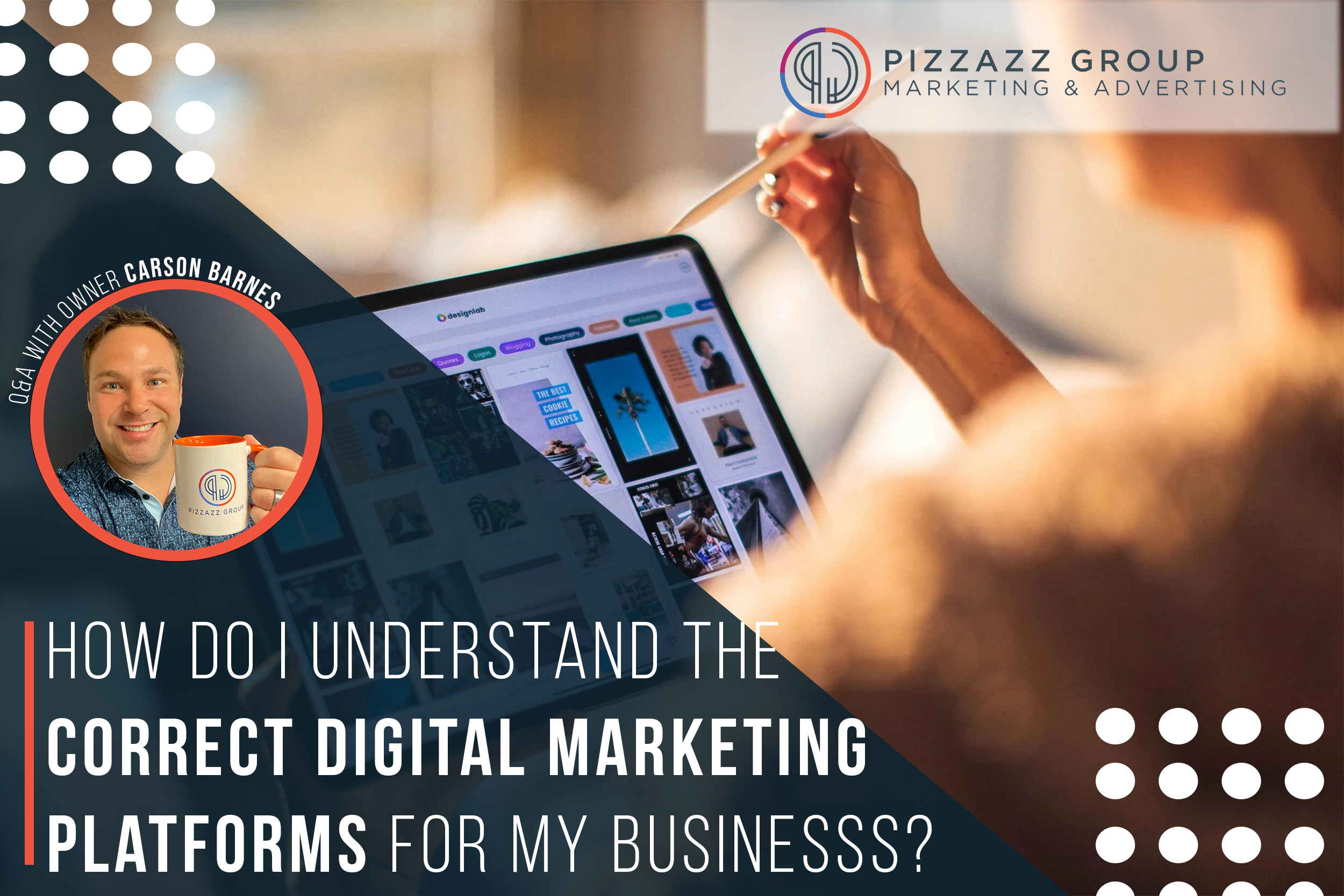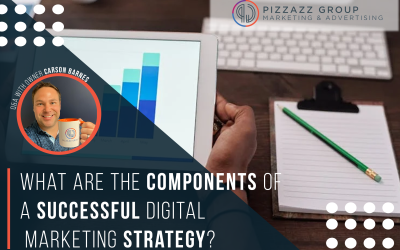
Assessing Your Business Goals and Objectives
Assessing Your Business Goals and Objectives

1. Brand Awareness: Are you looking to increase visibility and brand recognition among your target audience?
2. Lead Generation: Do you want to attract and capture qualified leads interested in your products or services?
3. Sales and Conversions: Is your primary goal to drive sales and increase revenue through digital channels?
4. Customer Engagement and Retention: Are you focused on nurturing existing customer relationships and fostering loyalty?
5. Website Traffic: Do you aim to drive traffic to your website to increase visits and engagement?
Understanding Different Digital Marketing Platforms
1. Search Engine Marketing (SEM) and Search Engine Optimization (SEO)
• SEM (Paid Search): Platforms like Google Ads and Bing Ads allow businesses to bid on keywords related to their products or services. Paid search ads appear at the top of search engine results pages (SERPs), targeting users actively searching for relevant information.
• SEO (Organic Search): SEO focuses on optimizing your website and content to rank higher in organic search results. It involves keyword research, content optimization, link building, and technical SEO to improve visibility and drive organic traffic.
Choosing SEM and SEO:
• Choose SEM (Paid Search) if your goal is immediate visibility and traffic, and you have a budget for paid advertising.
• Choose SEO (Organic Search) for long-term visibility, brand authority, and sustainable traffic growth without ongoing ad spend.
2. Social Media Marketing
• Facebook: Ideal for businesses targeting a broad demographic with advanced targeting options based on interests, demographics, and behaviors.
• Instagram: Great for visual content and reaching a younger audience interested in lifestyle, fashion, beauty, and food.
• Twitter: Suitable for real-time updates, customer service, and engaging with industry trends and news.
• LinkedIn: Best for B2B marketing, professional networking, and targeting decision-makers and professionals in specific industries.
• YouTube: Perfect for video content, tutorials, product demonstrations, and reaching a global audience interested in visual content.
Choosing Social Media Platforms:
• Consider Your Audience: Select platforms where your target audience is most active.
• Content Type: Choose platforms that align with the type of content you create (e.g., visual, video, text-based).
• Goals: Match platform capabilities with your specific marketing objectives (e.g., brand awareness, lead generation, community building).
3. Email Marketing
• Targeted Messaging: Send personalized messages, promotions, and updates directly to subscribers’ inboxes.
• Automation: Automate email campaigns for welcome emails, abandoned cart reminders, and personalized recommendations based on subscriber behavior.
• Segmentation: Segment your email list based on demographics, purchase history, and engagement level to deliver relevant content.
Choosing Email Marketing:
• Customer Relationship: Use email marketing to nurture leads, maintain customer relationships, and drive repeat purchases.
• Personalization: Leverage email automation and segmentation for personalized communication.
• ROI: Track and measure email campaign performance to optimize engagement and conversions.
4. Content Marketing and Blogging
• Educational Content: Publish informative articles, blog posts, ebooks, and whitepapers to educate and engage your audience.
• SEO Benefits: Improve organic search rankings and drive traffic to your website through valuable, optimized content.
• Authority Building: Establish your brand as an industry thought leader and build trust with your audience.
Choosing Content Marketing:
• Educational Value: Use content marketing to educate your audience, address pain points, and demonstrate expertise.
• SEO Impact: Enhance SEO efforts with keyword-optimized content and valuable resources.
• Lead Generation: Convert website visitors into leads through gated content and lead magnets.
5. Pay-Per-Click (PPC) Advertising
• Google Ads: Run paid search ads on Google’s search engine results pages (SERPs) and display network to reach users actively searching for products or services.
• Social Media Ads: Utilize platforms like Facebook Ads, Instagram Ads, LinkedIn Ads, and Twitter Ads for targeted audience reach and engagement.
Choosing PPC Advertising:
• Immediate Results: Use PPC for immediate visibility and traffic generation.
• Targeting Options: Target specific demographics, interests, and behaviors to reach qualified leads.
• Budget Flexibility: Control ad spend with budget settings and pay only for clicks or impressions.
Factors to Consider When Choosing Digital Marketing Platforms
1. Target Audience Demographics and Behavior
• Demographic Profile: Understand your audience’s age, gender, location, income level, interests, and online behavior.
• Platform Preferences: Identify which platforms your target audience uses most frequently and engages with the most.
2. Competitor Analysis
• Competitor Presence: Analyze where your competitors are active and successful in their digital marketing efforts.
• Differentiation: Identify gaps and opportunities to differentiate your brand and offerings on digital platforms.
3. Resource Allocation and Budget
• Budget Considerations: Evaluate your budget constraints and allocate resources effectively across chosen platforms.
• ROI Potential: Estimate the potential return on investment (ROI) for each platform based on historical performance and industry benchmarks.
4. Platform Analytics and Measurement
• Data Availability: Assess the availability of analytics and measurement tools to track and evaluate campaign performance.
• Insights and Optimization: Use platform insights to optimize campaigns in real-time and improve performance.
Steps to Determine the Right Digital Marketing Platforms
1. Define Your Objectives: Align platform selection with specific marketing goals and objectives (e.g., brand awareness, lead generation, sales).
2. Audience Research: Conduct thorough audience research to understand demographics, behaviors, and preferences.
3. Platform Evaluation: Evaluate each platform based on audience demographics, content type suitability, advertising options, and ROI potential.
4. Test and Iterate: Start with a few selected platforms, test campaigns, analyze results, and iterate strategies based on performance metrics.
5. Monitor and Optimize: Continuously monitor campaign performance, analyze data, and optimize strategies to maximize results and achieve business objectives.
Conclusion
For more information on a tailored Digital Marketing Plan for your business, contact Pizzazz Group at customer@pizzazzgroup.com or by calling (614) 350-1681.
Related Q&A With Owner Carson Barnes Blogs
How Do You Generate Digital Marketing Leads For My Business?
Lead generation in digital marketing involves attracting and converting prospects into potential customers through various online channels and tactics. This comprehensive guide explores proven techniques, strategies, and best practices to help you generate quality...
What Are The Components Of A Successful Digital Marketing Approach?
In today's digital age, an effective digital marketing strategy is essential for businesses aiming to reach and engage with their target audience, drive traffic to their websites, generate leads, and ultimately, increase conversions and revenue. A well-rounded digital...
What Are Some Ways You Repurpose Content For Different Digital Channels?
Repurpose content involves taking existing content and adapting it for use across different digital channels, formats, and audiences. This approach not only extends the lifespan of content but also amplifies reach, improves SEO, and enhances engagement. In this...





